This pizza sauce recipe is an incredibly rich, tasty, and flavorful combination of herbs in a thick tomato sauce, perfect for pizza night! You'll never look back once you've made homemade pizza sauce like this that pairs with my chewy pizza dough for the best pizzas ever!
Perfect for making pizza or even use in my pepperoni pizza casserole.
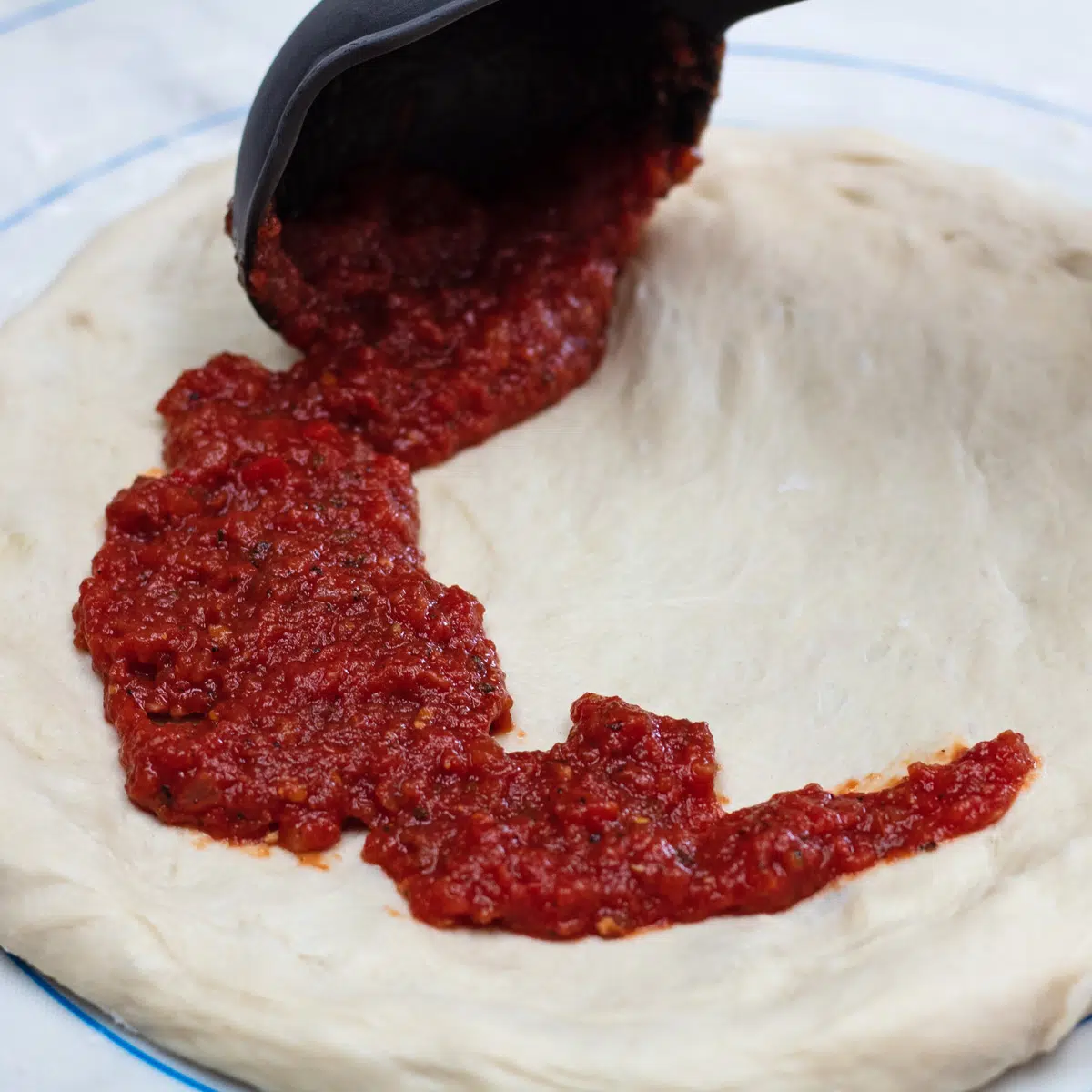
Jump to:
Is pizza the greatest food ever invented? It’s possible. I certainly wouldn’t argue with you!
But when you get down to it, there are three elements of pizza that all have to be at their best in order to create the perfect pizza pie: the crust, the sauce, and the toppings.
This recipe will help you make the tastiest sauce around with all of the “normal” ingredients and a few new ones.
Basil, garlic, and oregano are staples of Italian cooking, but throwing in some fennel seeds and fire-roasted tomatoes gives this sauce a tasty kick!
As with most of the world-renowned food that Italy is known for, the magic is in the ingredients and the long cooking times.
Slow-cooking this sauce allows the flavors to expand and blend in a way that makes your house smell heavenly!
🥘 Ingredients
You’ll probably have most of these ingredients on hand, as they are in many dishes. I use one or two of these most nights of the week at my house and keep a basil plant or two (weather permitting) on my back porch.
- Olive Oil - You're making an Italian dish! Use high-quality extra virgin olive oil (EVOO) for the best flavor!
- White Onion - Dice this very finely, or grate it so that the onion is well distributed throughout your pizza sauce.
- Garlic - Jarred minced garlic works, too, but take it from the Italians; fresh is better.
- Fire-Roasted Tomatoes - A can of these delicious fire-roasted tomatoes adds depth of flavor, but regular tomatoes work too.
- Tomato Paste- The one thing that can never come in a small enough can.
- Basil - If you have light in your kitchen, consider keeping a pot in your window for easy access to fresh basil. If not, check the produce aisle at your grocery store. There are usually fresh herbs, freeze-dried herbs, or herbs in a tube there. You can also find frozen basil in little pods in the freezer section.
- Dried Oregano - Or fresh if you have some growing on your patio porch! Otherwise, dried oregano is a staple herb that most of us have in the spice cabinet. *Use Italian seasoning if you can't find basil and oregano.
- Fennel Seeds - With a licorice-like flavor, it adds richness and depth to the sauce.
- Salt & Pepper - Anything you have on your table is perfect for this.
*Be sure to see the free printable recipe card below for ingredients, exact amounts & instructions with tips!*
🔪 How To Make Pizza Sauce
You'll also need a food processor or blender, a way to break this pizza sauce recipe down further once simmered.
This makes enough for two 16-inch pizzas plus a bit extra, although pizza isn’t the only thing you can use this pizza sauce recipe for!
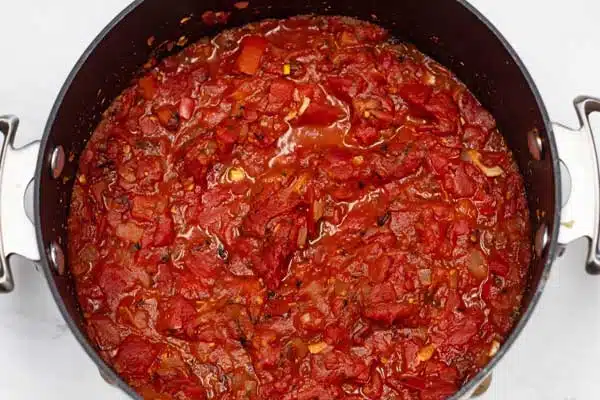
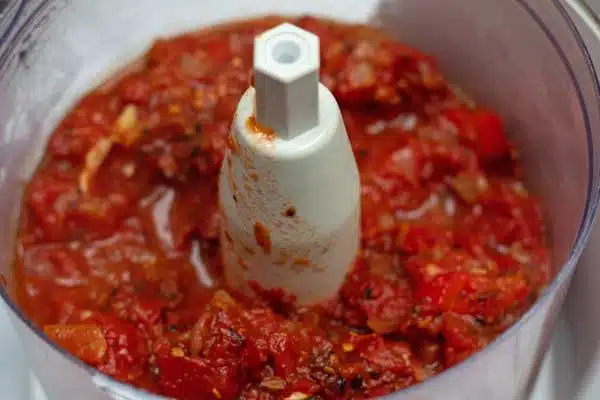
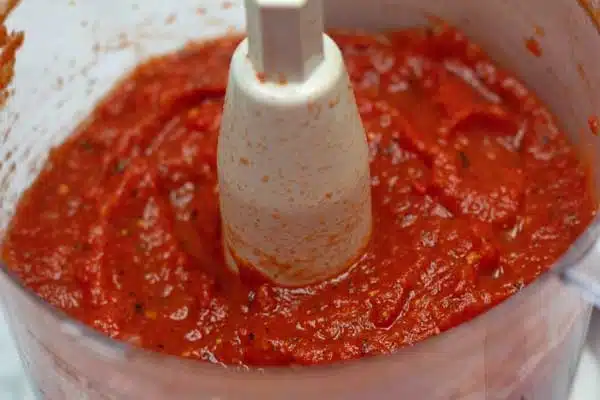
- Heat the oil. Add ½ tablespoon of extra virgin olive oil to a frying pan. Turn the heat to medium.
- Saute. Add ¼ a small white onion and 1 clove of minced garlic to the pan when the oil is hot. Saute until the onions are translucent. It should only take a couple of minutes.
- Add the remaining ingredients. Pour in 14.5 ounces of canned fire-roasted tomatoes, 2 ounces of tomato paste, 1 tablespoon of chopped fresh basil (or ¼ tablespoon of dried), 1 teaspoon of dried oregano, 1 teaspoon of fennel seeds, and 1 teaspoon each of both salt and pepper. Combine thoroughly.
- Boil then simmer. Bring the mixture to a low boil before reducing the heat. Simmer for about an hour, stirring occasionally.
- Cool. Cool it slightly and transfer it to a food processor or blender to puree until the sauce reaches your desired consistency. If you’re using it as a dipping sauce, serve it warm.
- Spread. Use a large spoon or ladle to spread the sauce over your pizza dough and spread it around. Cool completely if you’re not using it immediately, then store it in the fridge or freezer (see storage below).
Try it as a dipping sauce for garlic bread or air fryer garlic bread! Enjoy!
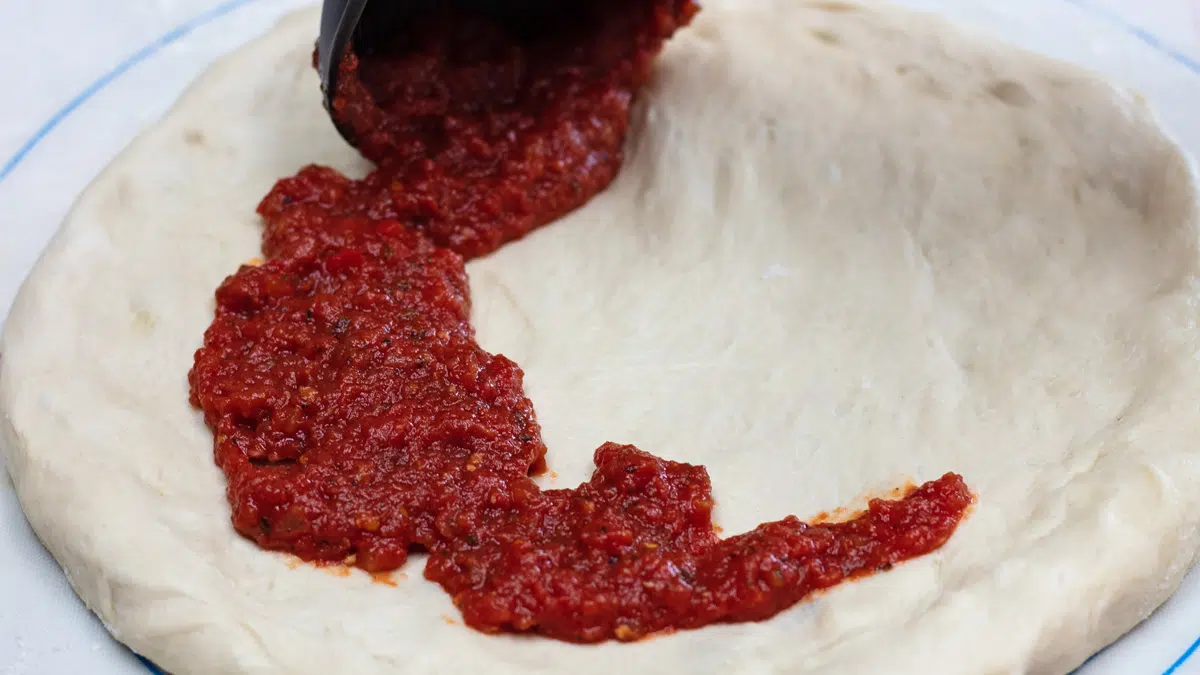
💭 Tips & Notes
- Using Fresh Basil: For the best flavor in your pizza, use fresh basil. If substituting with dried herbs, remember that they are more potent than fresh ones. Use 1 teaspoon of dried herbs to replace each tablespoon of fresh herbs.
- Sauce Preparation: Consider making your pizza sauce in large batches and storing it in the freezer. This approach saves time, as you can thaw and use the sauce for a quick pizza meal during busy weekdays.
- Sauce Quantity: Be mindful of the amount of sauce you use on your pizza. Too much sauce can lead to a soggy crust. Use the sauce sparingly, and remember, you can always dip your crust in extra sauce if needed.
- Tomato Choice for Sauce: In Italy, Roma tomatoes are often used for Margherita pizza because they have less juice, which helps prevent a soggy crust. Consider using Roma tomatoes for your sauce to achieve a similar effect.
🥡 Storing & Reheating
Pizza sauce can be refrigerated for up to three days. Ensure it's cooled before sealing it in an airtight container. For a pizza party, prepare the sauce in advance and freeze it. Freeze in an airtight container with half an inch of space for up to three months. Mason jars are ideal for freezing due to sauce expansion.
For small servings, freeze the sauce in ice cube trays, then transfer the frozen cubes to a freezer bag or container. Alternatively, freeze sauce in small portions in freezer bags, laying them flat for easy storage.
Reheating
- No reheating is needed for pizza topping. For dipping, warm it in a saucepan or microwave, covering it with a paper towel to prevent splatters. Reheat in 30-second intervals, stirring each time.
- If the sauce thickens, thin it with water or broth.
- To defrost, leave it in the fridge overnight, place in warm water for 30-45 minutes, or microwave mini cubes for 20-30 seconds. Avoid refreezing unused sauce.
❓ FAQ
This is an age-old question that every cook has their own secret for telling, and everyone else wants to know. For sauteing, you want to hit around 320℉, just below the smoke point for most cooking oils.
Personally, I wait until I see that the oil has gone from being smooth and glassy to shimmering with striations (lines) or little rivulets.
Pizza sauce and marinara are similar with a couple of key differences. Pizza sauce is thicker with a lower water content to prevent sogginess on the crust. It also contains more spices designed to go well with the fats and oils in cheese.
Pasta sauce is often simply seasoned so as to allow the cook to add complementary spices based on whatever kind of pasta they are cooking. Plus, they have chunks as opposed to a smooth, pureed pizza sauce.
In short, if you’re in a tight spot, using pizza sauce on pasta would work, but it would be worth adding some tomato pieces and a bit of water or broth for texture.
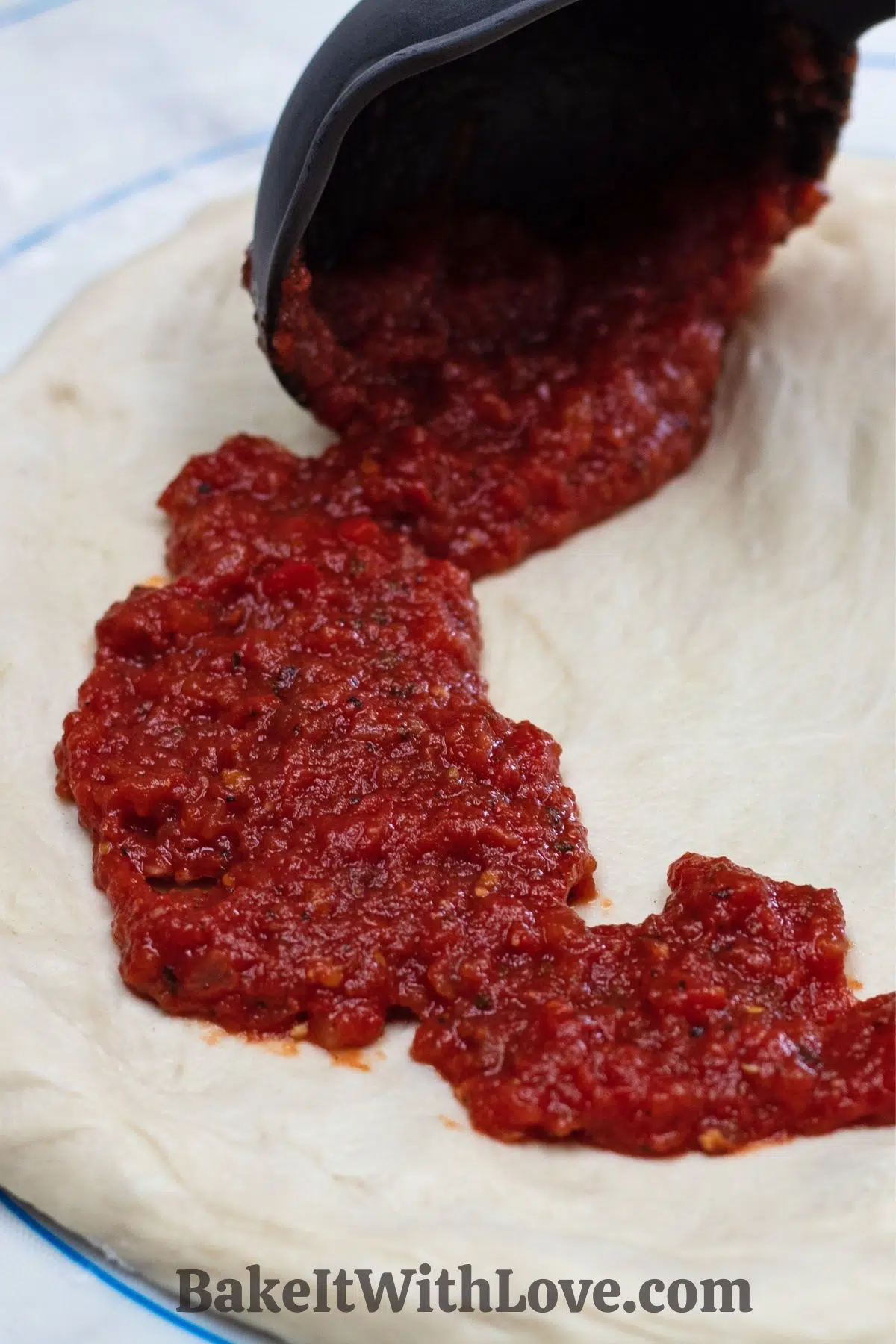
🍕 Pizza Recipes
- Tortilla Pizza
- Chicken Parmesan Pizza
- Margherita Sheet Pan Pizza
- Anchovy Pizza
- Garlic Pizza
- Air Fryer Frozen Pizza
Do you love a recipe you tried? Please leave a 5-star 🌟rating in the recipe card below and/or a review in the comments section further down the page.
Stay in touch with me through social media @ Pinterest, Facebook, Instagram, or Twitter! Subscribe to the newsletter today (no spam, I promise)! Don't forget to tag me when you try one of my recipes!
📖 Recipe Card
Pizza Sauce Recipe
Ingredients
- ½ tablespoon olive oil (extra virgin)
- ¼ small white onion (finely diced or grated)
- 1 cloves garlic (very finely minced)
- 14.5 oz fire roasted tomatoes (canned or regular canned diced tomatoes)
- 2 oz tomato paste
- 1 tablespoon fresh basil (chopped, or dried 1 teaspoon)
- 1 teaspoon dried oregano (or 1 tablespoon fresh oregano)
- 1 teaspoon fennel seeds (can be ran through a spice blender or food processor before cooking)
- 1 teaspoon each, salt & pepper (to taste)
Instructions
- In a large frying pan or stock pot, add olive oil and bring pan to medium heat.
- When oil is hot, add in the onions and garlic. Saute for a couple of minutes till the onions are soft and translucent.
- Add the fire roasted tomatoes, tomato paste, and all the seasonings. Mix well.
- Bring to a low boil, reduce heat and simmer for about an hour, stirring occasionally.
- Allow to cool slightly before transferring to a blender or food processor. Puree until the sauce reaches your desired consistency.Cool completely before storing, or serve warm if using as a dipping sauce.
- Spread the sauce over pizza dough or you can store it for later. Enjoy!
Notes
- Fresh basil is best for flavor.
- Should be plenty of sauce with a bit extra for two 16" family size pizzas!
- Make extra and freeze for later to save time.
- Store in the refrigerator in an airtight container up to 3 days or freeze up to 3 months.
Nutrition

Angela is an at home chef that developed a passion for all things cooking and baking at a young age in her Grandma's kitchen. After many years in the food service industry, she now enjoys sharing all of her family favorite recipes and creating tasty dinner and amazing dessert recipes here at Bake It With Love!

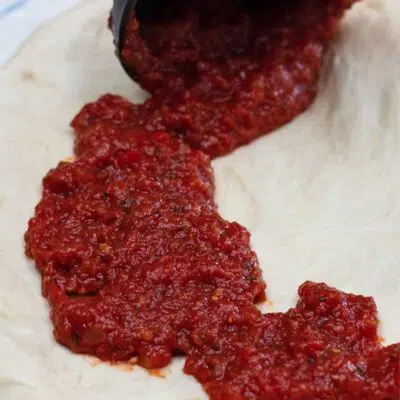
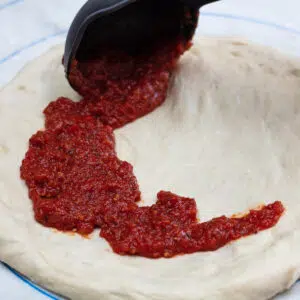
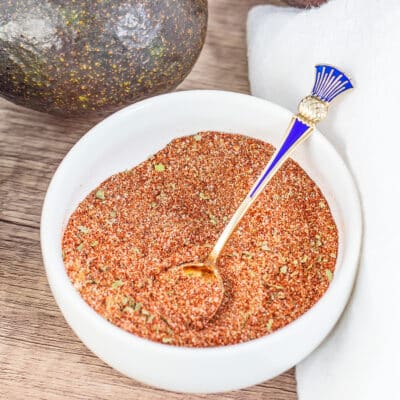
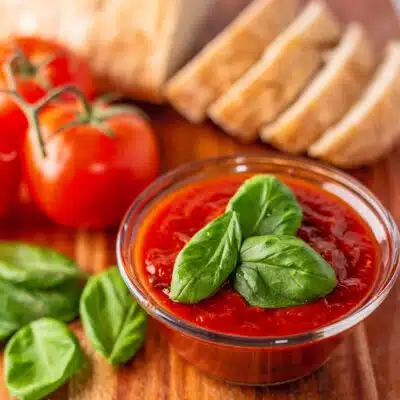

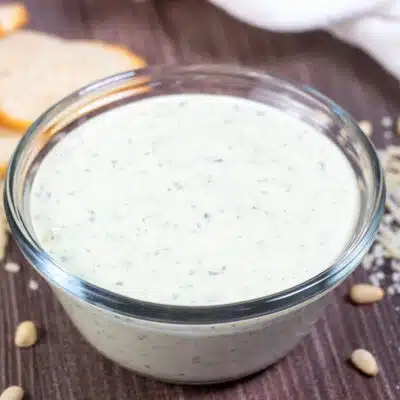
Comments
No Comments